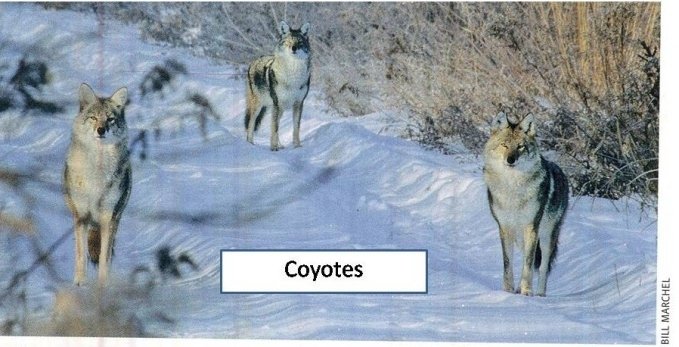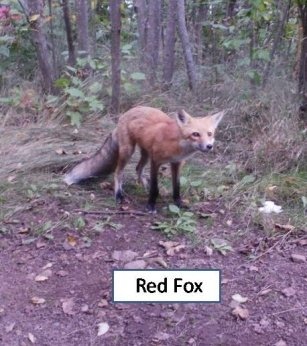Afton State Park -phenology, Dec. 10 to Dec. 23
Notes on the seasonal rhythms along the Lower St. Croix.
By Nina Manzi
Afton State Park (aossanna/Flickr)
Note: Afton State Park volunteer Nina Manzi has been updating the phenology calendar in the visitor center with events and pictures for years. When the pandemic began in March 2020, Nina adapted by providing the information online, including sharing it with St. Croix 360.
Phenology is the study of recurring events in the life cycle of plants and animals, many of which are closely tied to patterns of climate and seasonality. Learn more at the Minnesota Phenology Network.
Astronomy: Look for the Geminid Meteor Shower all night long on the nights of December 13 and 14th; the Geminids average 75 shooting stars per hour. December 21st is the Winter Solstice, the shortest day of the year. At our latitude there will be only 8 hours and 51 minutes of daylight from sunrise to sunset on the Solstice. If you watch the point on the horizon where the sun rises and sets each day, from the Summer Solstice to the Winter Solstice it moves from north to south, and then after the Winter Solstice reverses course and moves back northward. The world “Solstice” means “Sun Stands Still,” since it is on the solstice that the sun reaches its southernmost (or northernmost) point on the horizon.
Birds: As long as there is open water on the St. Croix River, look for flocks of geese overhead in the morning and late afternoon, and mallard ducks, mergansers, grebes and other waterbirds on and near the water. In 2014 there were reports of over 500 mergansers on the St. Croix in late December. That’s a lot of mergansers!
Mammals: People used to think that when coyotes moved into an area they would kill any resident foxes in order to reduce competition for food. But recent studies have shown that to be true in rural areas, but not in urban areas. That’s because urban areas generally have an overabundance of prey – large populations of rabbits, mice, and the like due in part to humans providing a landscape with lots of forage. Urban areas also have lots of scavenging opportunities provided by roadkill, human garbage, and compost piles – more than enough food for both coyotes and foxes. So with regard to coyotes and foxes, is Afton more rural or more urban? Which of the two species have YOU seen?
Plants: Aspens are relatively easy to identify by their bark in the winter, and you can also look for their heart-shaped leaves on the ground around them. They usually grow in a group, and that’s because their main form of propagation is to send out runners underground. The runners send up shoots and the shoots become new aspen trees . . . except they’re really all part of the same organism. One of the world’s largest organisms is a grove of 47,000 genetically identical aspen trees in Utah called “Pando”. Reddish-colored aspen buds are the most important winter food of ruffed grouse, so keep an eye out for grouse wherever you see aspen trees at Afton.
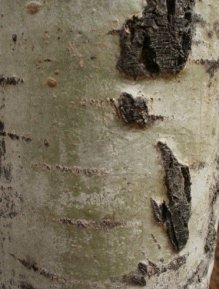

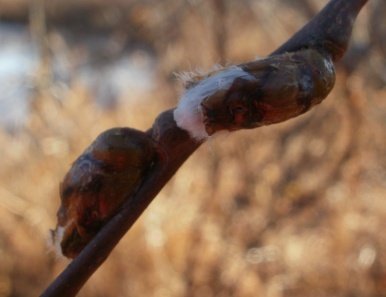
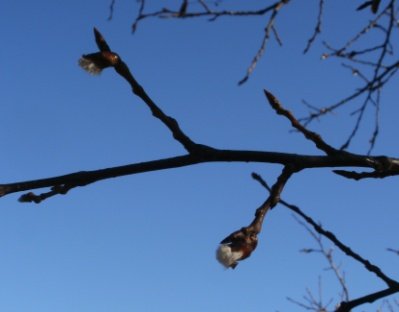
Weather observations:
Here are some weather observations from past years.
Photo/Image credits:
All photos copyright Nina Manzi, except:
Keith Henjum: Hooded Mergansers
Dean Lokken: Rabbit
Bill Marchel, MN Conservation Volunteer: Coyotes
Gary Sater: Mallard Duck, Pie-billed Grebe




